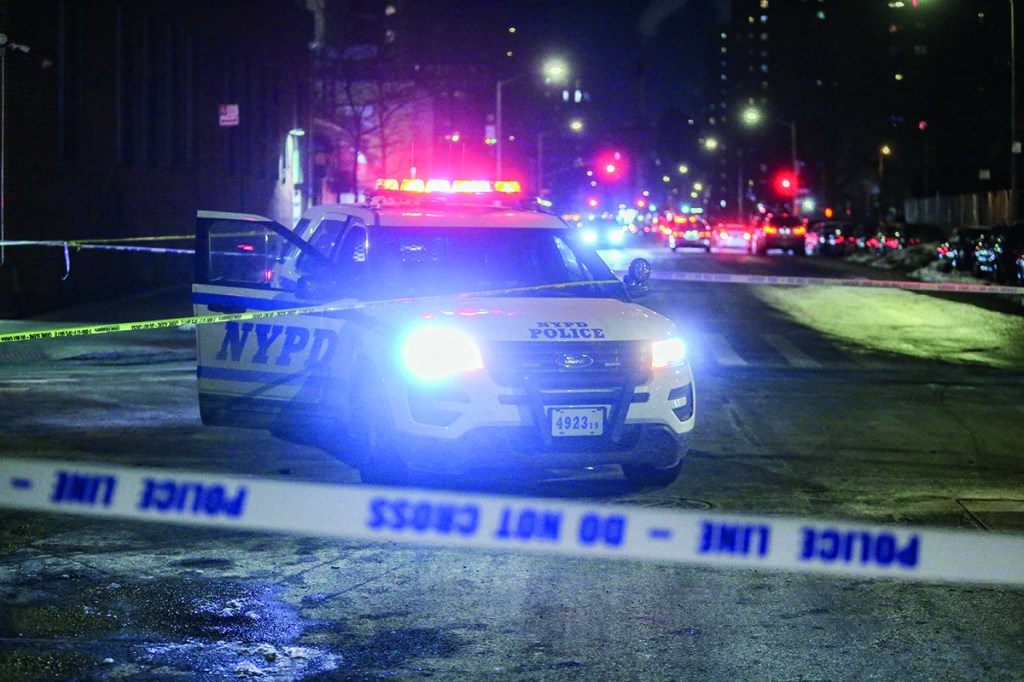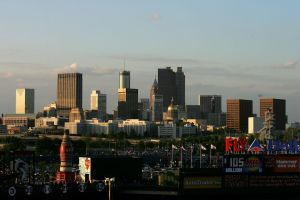As grown up as I felt at nine, whenever my parents let me walk to school, the corner store or Prospect Park with friends, I’d have been lying through my teeth if I denied sometimes feeling afraid — even in the little slice of Brooklyn I called home. But it wasn’t the New York Police Department or endemic racism that made me anxious. In the 1990s, getting mugged or beaten up in my own neighborhood always felt like more than a remote possibility. That sense of wariness was dull and could easily be forgotten if I was distracted. But it was always there, just under the surface.
That anxiety disappeared when we moved to a mostly white town in suburban Long Island. At school, no one looked like me. And as a half-Dominican, half-Puerto Rican kid with, uh, different hair, “the new kid from Brooklyn” got teased a bit — even racially taunted, on occasion. It was a heartbreaking transition in 1996: I hadn’t wanted to leave our two-bedroom apartment on Ocean Parkway, between Church and Caton. I didn’t care that my sister and I would have our own rooms and even a swimming pool in the backyard. And as much as I loved baseball, I was unmoved by the fact that Nassau County’s Little League fields were in far better condition than the Parade Ground’s fields near Prospect Park.
While I wasn’t thrilled about my new life in the burbs, I quickly learned that I could ride my brand-new chrome GT Dyno without even the slightest hint of fear that someone might snatch it out from under me. Eventually, I grew to both understand and appreciate the decision my parents made to move my sister and me out to what they felt would be a safer, more nurturing environment. I also came to realize that I was the fortunate beneficiary of an incredible privilege: being born to parents who, albeit by the skin of their teeth, could afford to leave a high-crime city for a low-crime suburb meant that I could live my most formative years in a place where violent crime just wasn’t something people worried about.
Decades later, I would make the same decision for my son: in the months before he was born, my wife and I often found ourselves discussing the quality of life in our slowly gentrifying East Harlem neighborhood, which at the time was getting harder and harder to imagine pushing a baby stroller through. So we decided to move farther away from our workplaces to the safer, cleaner neighborhood of Forest Hills, where our family was far less likely to encounter the sort of crime and disorder we’d seen in East Harlem.
Though things in Harlem weren’t anywhere close to as bad as they had been in mid-1990s Brooklyn, I found myself thinking again about my family’s move to Long Island and the reasons behind it. I also found myself thinking about how many families living in neighborhoods far more dangerous than the one I moved away from have no choice but to stick it out. Whatever that number was, it was too high.
From at least the time that the late Howard Cosell declared to a horrified 1977 World Series audience that “the Bronx is burning,” New York City had been known as the epicenter of a national crime epidemic. Thirteen years later, the city’s murder total would peak with more than 2,200 lives lost in 1990.
But by 1996, a look at the top-line statistics would have supported some cautious optimism. And even during the peak years, the violence in the neighborhood I called home (within the confines of the 66th Precinct) wasn’t what it was in the nearby 70th, 71st or 67th Precincts, whose borders ranged from a few short blocks to a little over a mile away from our building. Thanks in significant (though not exclusive) part to the police department’s successful integration of “broken windows” — a theory posited by the late George L. Kelling and James Q. Wilson in their famous Atlantic article by the same title — into its policing strategy under William “Bill” Bratton, New York was, by 1996, in the early stages of what would turn out to be a historic decline in crime. But our proximity to some of Brooklyn’s worst neighborhoods (and a shooting on our block earlier that year) was enough to sustain a real fear of crime despite the progress.
The average Brooklyn resident’s sense of security just wasn’t very high in the mid-1990s. This was understandable, as Kelling explained in a 1998 article coauthored with Bratton in the Journal of Law and Criminology: it wasn’t until “after 1995 or 1996” that the impact of the gargantuan police effort led by Bratton “started to be felt.”
One couldn’t expect the psychological conditioning New Yorkers had undergone over the previous decade to be undone in a snap. It would take years for people to incorporate what the 1996 statistics were showing into how they actually went about their daily lives. My parents and I were no exception, particularly since our perceptions were largely informed (and perhaps even skewed) by what my father — then in his fifth year as an NYPD detective assigned to Brooklyn’s robbery squad — had been witnessing daily since he joined the department in 1983.
My father’s experiences on the job were, in many ways, an extension of the mess he had grown up in while being raised by a single mom in the (now highly desirable) neighborhood he always derisively yet affectionately referred to as “Park Slop — I mean — Slope.” And both my parents worried that despite their best attempts to raise me the right way, I’d fall in with the wrong crowd and become a source of the fears they and so many others felt at the time.
One of the most frustrating aspects of America’s necessary and important criminal justice reform debate is the cavalier attitude with which (usually, though not always) well-off advocates living in posh suburban enclaves or luxury city high-rises push policies whose downside risks will be borne by a tiny slice of our most vulnerable citizens, who live in places most of those advocates wouldn’t dare walk through by themselves on a summer night.
The reality is that most criminal justice policy shifts — even relatively radical ones — won’t make much of an impact in large swaths of America. Why? Because some places just aren’t as vulnerable to crime increases as others. Indeed, an entire subfield of criminology is dedicated to exploring how the physical environment of not just a neighborhood but sometimes even a single block can be incredibly conducive to crime in ways that an intersection just two streets over is not.
When we evaluate criminal justice policy proposals like the mass decarceration programs that are in vogue on the left today, we should do so with that disparity in mind. That is, we must evaluate them with the understanding that while emptying prisons and cutting back on policing may not change a whole lot in neighborhoods like DC’s Georgetown, New York’s Scarsdale or LA’s Beverly Hills, they could wreak havoc in Brooklyn’s Brownsville, Chicago’s Austin or Baltimore’s Belair-Edison neighborhoods. Yet the troubling disparities illustrated by the drastically unequal distribution of violent crime in America are largely ignored by activists and the media.
In fact, those who do call for more attention to be given to the violence in America’s most dangerous neighborhoods in cities like Detroit, Chicago, Baltimore, New Orleans, Philadelphia and St. Louis are often chastised for doing so. We’re often accused of fearmongering and distracting from the fact that nationally crime is quite low, relative to modern peaks.
But using national crime rates to suggest a general direction the nation ought to take as to criminal justice questions is exactly the wrong way to approach these issues. The limited utility of national crime rates stems from the fact that they aggregate crime data. Why is this a problem? Because we don’t live in the aggregate. So the crime rate of a large geographical area like a country, state or city tells us essentially zero about what life is like in a particular place at a particular time.
Were you to be randomly dropped over a point in the United States, the chances are pretty good that you’d land somewhere with a murder rate close to zero. Try it with 10,000 more people, though, and an unlucky few will find themselves in neighborhoods with homicide rates that approach those in some of the most dangerous places on earth.
Unfortunately, reform advocates often obscure this important reality, among others. Such obfuscation is evidenced by the widespread though misguided belief that the United States suffers from an overincarceration problem. This is not to say that there isn’t a subset of the country’s prison and jail populations whose incarceration does not serve a legitimate penological end. But the vast majority of American prisoners are violent, chronic offenders. So a drastic reduction in the incarcerated population would put many of those living in our country’s most vulnerable neighborhoods at risk — as would a sharp curtailment of the proactive policing practices that helped drive the great crime decline of the 1990s. Such a decrease is another dangerous policy idea to pursue, and like mass decarceration, it is the product of a misapprehension of reality. According to advocates of de-policing, violence is endemic to American law enforcement. Therefore, they argue, we must reduce its footprint. But they’re wrong.
It’s important to recognize that the criminal justice system is not perfect and that there is indeed room for improvement, some of which falls into the category of making the system less harsh. But if the most important goal is to improve the quality of life in America’s most dangerous neighborhoods, policy must recognize the reality that our criminal justice system sometimes — indeed often — fails to be harsh enough.
Rafael A. Mangual is a senior fellow and head of research for the Policing and Public Safety Initiative at the Manhattan Institute. This is adapted from Criminal (In)Justice: What the Push for Decarceration and Depolicing Gets Wrong and Who It Hurts Most (Center Street). This article was originally published in The Spectator’s August 2022 World edition.


















